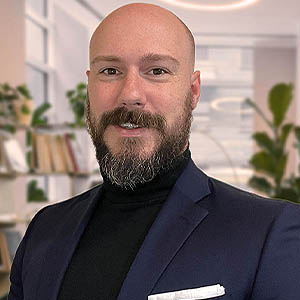Learn how 3 Rivers Energy Partners’ large-scale RNG projects benefit the environment and industry newcomers
3 Rivers Energy Partners (3 Rivers) is a pioneering renewable energy company that designs, constructs, and operates projects that convert untapped bio-waste streams into valuable energy sources, such as renewable natural gas (RNG). As champions of circular solutions, the company is leading the way in the energy transition by providing organizations with energy solutions using their existing bio-waste streams as feedstock. A year ago, we spoke with Kegan and John Rivers, SVP of Marketing and President and CEO of 3 Rivers, who told us all about the company’s work with Jack Daniel’s and Jim Beam. We catch up with the duo again a year later to learn about 3 Rivers’ ongoing projects.

Valuable insights
“First, our Jim Beam project is on track to become operational by the end of the year. Additionally, we are working on several significant projects with sugar cane companies, a few large breweries – which I cannot specifically mention by name yet – and ethanol facilities. In other words, our partnership targets are almost any natural food and beverage company that uses crops in their production process. We are not in the business of managing landfills as we believe landfills should handle their own waste and can easily buy a gas plant from one of the many manufacturers in the US. The technology used in gas plants is not new, as manufacturers have been putting up similar facilities in oil and gas fields for a long time, so their technology is already proven and reliable,” opens John.
Discussing the topic of technology further, John describes 3 Rivers’ approach and adoption of the autonomous 360 Rain technology for distributing fertilizer. “Our approach is that in anaerobic digestion, old technology tends to win the day because we know how to make it work. The process is finicky as it involves living organisms, so it is best not to stray from proven methods, especially at our scale. In fact, we are preparing to build our second mobile digester, which can be moved to any facility and start digesting on a smaller scale, not just for bench testing, but for getting valuable insights into a specific feedstock. Apart from its automation system, this technology is not new, we are simply applying it correctly.
“On the other hand, 360 Rain is a new technology we added to our fertilizer program, enabling us to take a cradle-to-grave approach. The challenge in this industry is that we need to digest enormous quantities of stillage waste from whiskey distillers every single day, and once we extract gas from it, we still have to deal with the remaining waste. It cannot simply be moved elsewhere as we strive to maintain our cradle-to-grave approach. and this is where the 360 Rain comes in. By using digested waste as fertilizer in fields, the 360 Rain benefits farmers as they no longer need to pay someone else to apply fertilizer. The autonomous, diesel powered/electric drive 360 Rain machine walks through the field and applies fertilizer, nutrients, and water to the roots for better absorption while reducing the evaporative loss associated with regular irrigation and normal fertilizer application.”
Market dynamics

The fertilizer coming out of 3 Rivers’ anaerobic digestion process not only minimizes the company’s waste, but it also presents key benefits to users, crops, and the environment. “We keep the fertilizer in a form that is immediately accepted by the ground, unlike other fertilizers that come in a dry or granular form that plants struggle to absorb rapidly. If there is heavy rain, as is common along the coasts, a significant portion of that fertilizer can get washed away and end up in the ocean, causing harmful red tides. This occurs because the fertilizer stays on the ground until it is fully absorbed by the plants, which may take up to a year or two. Because our fertilizer offers a better nutrient source that is applied at the root of the plant and is more plant available for absorption, it is less likely to be washed away by rain, thus eliminating the need to reapply as one would with other fertilizers,” John elaborates.
On the topic of market dynamics, John reveals how he expects the demand for RNG to evolve in the next five-to-ten years and how 3 Rivers is positioning itself to take advantage of that growth. “I believe that more companies are going to build smaller RNG facilities because they feel it is the right thing to do, but in reality, their gas production will not be significant enough to impact the market. Meanwhile, we are currently working on projects that total between 70 million and 100 million dekatherms per year, which is not much by conventional natural gas standards but as our projects are larger in scale, they reduce our client’s carbon footprint by a greater percentage. As a result, we do not need to build as many projects to make a significant impact. Therefore, I believe there will be more demand for larger RNG projects while smaller ones should remain locally owned and operated. This way, if the plant creates any benefits, the local owner will reap the rewards. However, we will continue to operate at a more significant level, with most of our projects requiring a capital investment of $200 million to $300 million to get off the ground.
“By taking on the responsibility of building, owning and operating such projects, we minimize the risk for organizations that have a bio-waste stream. We provide them with the peace of mind to do the right thing for the environment and their community without having to navigate the complexities of a new industry,” Kegan concludes.
